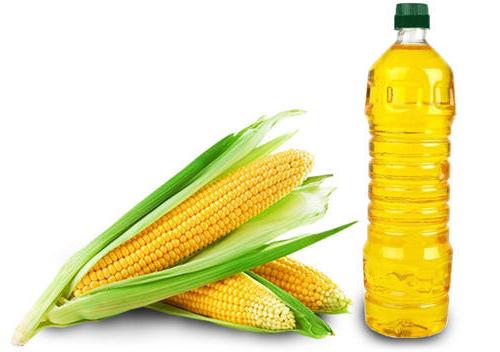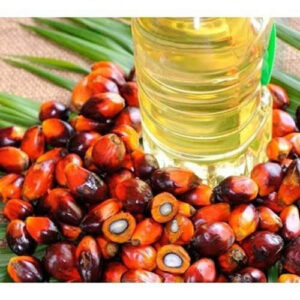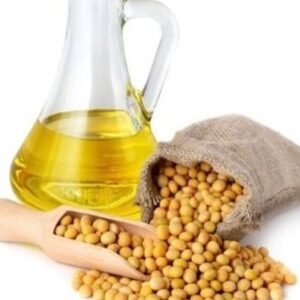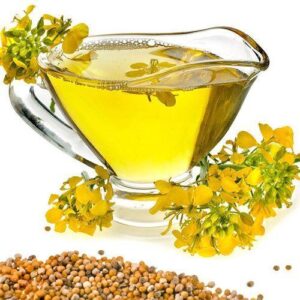Corn oil
Corn oil (maize oil) is oil extracted from the germ of corn (maize). Its main use is in cooking, where its high smoke point makes refined corn oil a valuable frying oil. It is also a key ingredient in some margarine.
Mode Of Payment Terms
Advance-deposit payment TT (Bank Transfer).
We have a well-equipped warehouse and transportation to process your requirements in the shortest possible time.
Description
|
Corn Cooking Oil
|
|||||
|
Packing Detail
(All Sizes)
|
Carton
Weight (kg)
|
Number
Of Pieces
|
Boxes In
1×20 Cntr
|
Total Bottles
Cans/Tins
|
Origin
Country
|
| 750ml x 12 pcs bottles | 8.10 | 12 | 2248 | 26976 |
Sweden
EU-27 Ukraine |
| 1Ltr x 12 pcs bottle | 10.80 | 12 | 1870 | 22440 | |
| 1.8Ltrs x 6 pcs bottles | 9.72 | 6 | 1600 | 9600 | |
| 2Ltrs x 6 pcs bottles | 10.80 | 6 | 1463 | 8778 | |
| 3Ltrs x 6 pcs bottles | 16.20 | 6 | 1102 | 6612 | |
| 5Ltrs x 4 pcs bottles | 18.00 | 4 | 1006 | 4024 | |
| 10Ltrs Jerry Can | 9.00 | 1 | 2490 | 2490 |
Shelf Life
|
| 18Ltrs Jerry Can | 16.20 | 1 | 1450 | 1450 | |
| 18Ltrs (Tin packing) | 16.20 | 1 | 1296 | 1296 |
12 Months
|
| 20Ltrs Jerry Can | 18.00 | 1 | 1330 | 1330 | |
| 25Ltrs Jerry Can | 22.50 | 1 | 1098 | 1098 | |
| 211Ltrs Metal Drum | 190.00 | 1 | 98 | 98 | |
| Varieties Available: Pure Corn Oil | |||||
Is Corn Oil Healthy? Nutrition, Benefits, and Downsides.
Corn oil is a refined vegetable oil widely used in cooking and especially deep frying.
It also has many other applications and is common for industrial purposes or as an ingredient in cosmetics.
Corn must go through a complex refining process to produce corn oil.
This process gives the oil many unique characteristics, though not all of them are positive.
This article reviews corn oil, including its nutrition, uses, and production, as well as potential benefits and downsides.
Corn oil nutrition
Corn oil is 100% fat, containing no protein or carbs. One tablespoon (15 ml) of corn oil provides:
- Calories: 122
- Fat: 14 grams
- Vitamin E: 13% of the Reference Daily Intake (RDI)
During the process of extracting corn oil from corn, many vitamins and minerals are lost in the process. Still, the oil has a fair amount of vitamin E.
Vitamin E is a fat-soluble nutrient that acts as an anti-inflammatory antioxidant in your body.
Antioxidants are compounds that neutralize molecules called free radicals, which can increase your risk of conditions like heart disease, type 2 diabetes, and some cancers when their numbers get too high.
What’s more, corn oil is about 30–60% linoleic acid, a type of polyunsaturated omega-6 fat.
Polyunsaturated fats include omega-6 and omega-3 fats. The latter is associated with decreased inflammation and better health when they’re present in your body at a ratio of about 4:1 of omega-6 to omega-3.
However, many people’s diets contain too many inflammatory omega-6 fats and not enough anti-inflammatory omega-3 fats.
Corn oil has an omega-6 to omega-3 ratio of 46:1, which can contribute to this imbalance.
SUMMARYCorn oil is 100% fat and provides 122 calories per tablespoon (15 ml). It’s mostly made of polyunsaturated omega-6 fats and contains some vitamin E.
Uses and how it’s made
Corn oil has a variety of uses, both in cooking and non-cooking applications.
It’s used as an industrial cleaner and lubricant, as well as to make fuel for gasoline- and diesel-powered engines. Plus, it’s included in many cosmetic products, liquid soaps, and shampoos.
Still, it’s best known as a frying oil. It has a very high smoke point (the temperature at which oil begins to burn) of about 450°F (232°C), making it ideal for deep-frying foods to perfect crispness without burning them.
Corn oil is widely available, making it a popular choice for home cooks. You can buy it at almost any grocery store and used in many ways, such as for:
- sautéing and frying
- salad dressings and marinades
- cakes, bread, and other baked goods
How it’s produced
With a fat content of only about 1–4%, corn is not a naturally oily food. Therefore, it must go through an extensive process to extract the oil.
The kernels must first be mechanically pressed to separate the oil. The oil then goes through a series of chemical processes that remove impurities, as well as undesirable smells and tastes.
The following processes that are involved remove many vitamins and minerals and may even introduce harmful substances:
- Hexane extraction. Corn is washed with a solution containing a chemical called hexane that causes it to release oil. Hexane is popular in having a negative impact on the nervous system in humans and animals.
- Deodorization. There is the removal of Undesirable smells and tastes from the oil, along with some healthy compounds. Prior to this step, the smell and taste of corn oil make it unsuitable for cooking.
- Winterization. Waxes and saturated (solid) fats are removed from the oil so that it stays liquid at low temperatures. Without winterization, many vegetable oils would solidify in cold temperatures.
SUMMARY Corn oil must go through an extensive refining process so as to extract from corn. It’s most common us is as a frying oil due to its high smoke point but also has industrial applications.
Potential benefits of corn oil
Corn oil appears to have beneficial health effects in some studies.
It contains compounds that may promote heart health, such as phytosterols, vitamin E, and linoleic acid.
Rich in phytosterols
Corn oil is full of phytosterols, which are plant-based compounds with a similar structure to the cholesterol found in animals.
Phytosterols are potentially anti-inflammatory, and eating a diet rich in anti-inflammatory foods may decrease your risk of certain conditions, such as heart disease, type 2 diabetes, and some cancers.
Corn oil has a high phytosterol content compared to several other cooking oils like peanut, olive, and canola oils. It’s particularly high in the phytosterol beta-sitosterol.
Test-tube studies have found that beta-sitosterol may have anti-tumor properties. In one study, it was able to significantly slow down the growth of lung cancer cells while having no effect on healthy lung cells.
However, we must carry out more human research to understand the potential anticancer properties of beta-sitosterol.
Additionally, phytosterols are great in helping to block your body’s absorption of cholesterol. Thus, they may help decrease high cholesterol levels, which are a risk factor for heart disease.
May promote heart health
Because corn oil contains heart-healthy compounds, such as vitamin E, linoleic acid, and phytosterols, it may lower your risk of heart disease.
Vitamin E is a powerful antioxidant, so a diet high in this nutrient may prevent oxidative damage to your heart and blood vessels caused by excess free radicals.
Additionally, in a review of studies in more than 300,000 people, swapping 5% of total calories from saturated fat to linoleic acid was associated with a 9% lower heart attack risk and a 13% lower risk of heart-related death.
Some studies also find that corn oil itself helps reduce cholesterol, especially LDL (bad) cholesterol, likely due to its phytosterol content.
In a 4-week study in 25 adults, those consuming 4 tablespoons (60 ml) of corn oil daily had decreased LDL (bad) cholesterol, total cholesterol, and triglyceride levels, compared to those consuming the same amount of coconut oil.
Keep in mind that some of these studies were funded by ACH Food Companies, Inc., the producer of Mazola corn oil. The results of health studies with funds from food corporations are often in favor of the company’s products.
SUMMARYCorn oil is high in anti-inflammatory phytosterols and other compounds that may help reduce certain heart disease risk factors, such as LDL (bad) cholesterol and total cholesterol.
Important downsides of corn oil
Corn oil has some significant downsides that may outweigh its potential health benefits.
High in omega-6 fats
Corn oil is high in linoleic acid, an omega-6 fat that has been linked to improved health in some studies.
However, omega-6 fats can be harmful if consumption is in excess. According to most research, your body needs to maintain an omega-6 to omega-3 ratio of about 4:1 for optimal health.
Most people consume these fats in a ratio of about 20:1, eating far more omega-6 fats than omega-3s.
This imbalance has been linked to conditions such as obesity, impaired brain function, depression, and heart disease.
A proper balance of these fats is important, as omega-6 fats tend to be pro-inflammatory — especially when there are not enough anti-inflammatory omega-3 fats present.
Corn oil has an omega-6 to omega-3 fat ratio of 46:1.
Limiting corn oil and other foods high in omega-6 fats while increasing your intake of foods rich in omega-3 fats, such as fatty fish and chia seeds, may help decrease inflammation and promote overall health.
Made with genetically modified corn
Most corn oil is made using genetically modified (GMO) corn. In 2010, about 90% of the corn grown in the United States was GMO.
there is a modification of most of the plants to be resistant to insects and certain weed killers like glyphosate.
Many people are concerned about the effects of glyphosate buildup in the body from eating glyphosate-resistant GMO foods that have been treated with large quantities of the herbicide.
In 2015, glyphosate was classified as a “probable carcinogen” by the World Health Organization (WHO). However, much of the available test-tube and animal evidence does not support this.
Many people also speculate that GMO foods and glyphosate may contribute to the rapid increase in food allergy and intolerance rates.
While several short-term studies have concluded that GMO foods are safe, long-term research is lacking. GMO corn has only been available since 1996. As such, its long-term impact on overall health is unknown.
If you’re concerned about GMO foods and would like to avoid them, seek out products that have been verified by the Non-GMO Project.
Highly refined
Corn oil is a highly refined product. It must go through an extensive process and be made edible.
This process causes corn oil to be more likely to become oxidized — meaning that at a molecular level it begins to lose electrons, becoming unstable.
High levels of oxidized compounds in your body can increase your risk of certain diseases.
In fact, the beta-sitosterol in corn oil becomes oxidized as it’s heated over long periods, such as in a deep fryer. However, the antioxidant vitamin E helps slow this process down.
Heating corn oil also produces the antinutrient acrylamide, a highly reactive compound that has been linked to problems with nerve, hormone, and muscle function.
Acrylamide has been classified as a potential carcinogen by the International Agency for Research on Cancer (IARC).
SUMMARY
Corn oil is high in inflammatory omega-6 fats and made from GMO corn.
Is corn oil healthy?
Corn oil contains some healthy components like vitamin E and phytosterols, but overall it’s not healthy fat.
This is due to high refining and high in inflammatory omega-6 fats and there should be a limit in a typical Western diet.
There are many healthier alternatives to corn oil. For example, extra virgin olive oil comes from naturally fatty olives. Olive oil also contains fewer polyunsaturated omega-6 fats than corn oil and is instead rich in monounsaturated oleic acid, which may aid weight management.
Unlike those of corn oil, the health benefits of olive oil have been thoroughly researched for decades. It may protect against heart disease, cancer, osteoporosis, obesity, and type 2 diabetes.
You can use olive oil in place of corn oil in salad dressings and cooking applications, such as sautéing and pan-frying.
For higher-heat cooking methods like frying, swap corn oil for coconut oil, a healthy saturated fat that is more stable at high temperatures and resistant to oxidation. buy corn oil today from talaria trade limited and never regret it.
Additional information
| MOQ | 28 Metric Ton/A Truck Load |
|---|





